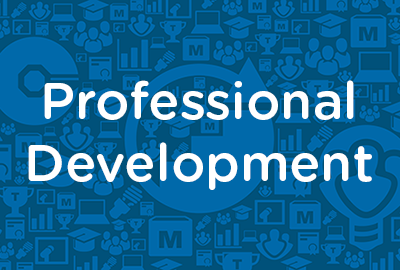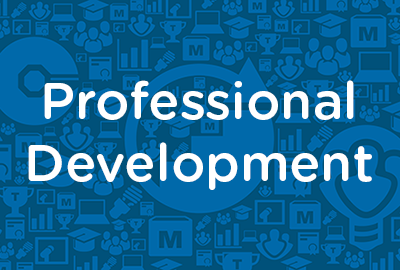 |
Strategic Decision Making: Decision Options |
1.17 |
Before you begin generating options for a business decision, you should take time to understand the decision you’re going to make. You can increase and improve your options by using available techniques and by avoiding pitfalls. When planning to make a decision, you might generate other options, and compare them without considering which approach you should use to make the decision. By failing to consider your approach, you might select one of the options without considering all the necessary information. This lack of information can prevent you from recognizing and considering some of the best options.
In this course you will learn to: identify the techniques for generating options and improving the quality of your options, and evaluate your options and identify the techniques for making a final decision. |
 |
Quality Management: Ideas and Organization |
0.84 |
Brainstorming works best when used by a group of four to nine people. When brainstorming, team members’ goals should be to break their existing patterns of thought by generating original and creative ideas.
In this course you will learn to: sequence and follow the steps for brainstorming, identify the purpose of affinity diagrams, construct activity network diagrams, and identify the benefits of using CPM and PERT charts to understand the critical path of a project. |
 |
Budgeting: Variances, Forecasts, and Action Plans |
0.75 |
Budgets are rarely perfect, and variances will occur. To avoid significant problems or missed opportunities, you should study all variances to determine their causes and possible effects. Some variances are favorable, while others are not. You can use variances in year-to-date figures for sales, materials, labor, and to project more accurate forecasts for the rest of the year. |
 |
Budgeting: Capital Budgets |
1.00 |
Budgets represent how a company will use its resources to accomplish its goals. To achieve some goals, companies need to invest in new facilities or expensive equipment. These items, which will help produce income over a number of years, are planned for in capital budgets. Capital budgets have their own terminology with which you will need to be familiar in order to plan well and make good decisions. Depreciating is one of the central concepts in capital budgeting. |
 |
Project Teams: Preparing Teams for Project Work |
1.00 |
Building a project team is more complex than assigning employees to the team. Team members must feel a sense of dedication to other team members, as well as to the project itself. Members who are not dedicated to the project team often disregard meetings, deadlines, and commitments, causing the entire team to suffer. To avoid these problems, the team managers and supervisors need to encourage team building to benefit the project, the team members, and the organization.
In this course you will learn to: empower and motivate a project team and develop positive culture in a project team, identify the causes of change in a team and manage change, and improve existing project teams. |
 |
Quality Management: Preparing to Change Processes |
0.75 |
Business process improvement is a basic managerial responsibility. Just as managers are responsible for employee performance appraisals and budgeting, they are also responsible for making continual improvements in their division or department.
Because improving business processes is an ongoing effort, management needs to control and coordinate processes to ensure their success. In addition, employees who are affected by improvement changes need active support from management.
In this course you will learn to: identify management goals in preparation to lead business process improvement, as well as plan improvements. |
 |
Correcting Performance Problems: Providing Feedback To Employees |
0.84 |
By addressing employees who have performance problems, you can help them make positive changes, encourage career advancement, and promote personal and professional growth. Addressing an employee involves providing the feedback necessary to improve performance.
In this course you will learn to: prepare to conduct a feedback session in which you encourage communication with the employee, and conduct a constructive feedback session with an employee who has a performance problem. |
 |
Conducting Meetings: Communicating As Meeting Leaders |
0.50 |
Clarity is crucial for conducting an efficient and productive meeting. By communicating clearly, you’ll be able to express ideas, overcome barriers to understanding, and specify expectations. Your ability to communicate clearly will facilitate interactions among participants, and minimize confusion and conflict.
In this course you will learn to: identify the ways to communicate clearly in a meeting, and identify communication styles to avoid, and the ways to enhance relationships with participants. |
 |
Coaching: Fundamentals Of Coaching |
1.00 |
Coaching is the continuous effort to help employees maximize their abilities through personalized counseling and advice. The coaching process not only trains employees to become familiar with business procedures and expectations, but also motivates them to reach both individual and company goals.
Coaching is beneficial to employees because it encourages them to discover their worth and potential. Through proper coaching sessions, employees build confidence, improve their work habits, and increase their productivity.
In this course you will learn to:
1. Define coaching and identify the qualities of an effective coach
2. Build a coaching foundation and plan a coaching strategy. |
 |
Advanced Interpersonal Communication: Colleagues and Subordinates |
0.50 |
Colleagues might include people in your office, team, department, or division. They do not hold a supervisory position over you, nor do you hold a supervisory position over them. Instead, you are all in a similar place on the corporate ladder. Learning how to communicate effectively with your colleagues helps maintain a friendly and effective workplace, and enables you to better promote your ideas and respond to those of others.
In this course you will learn: to identify the guidelines for communicating with colleagues, and how to take appropriate steps to apologize to subordinates; use appropriate tactics to refuse a subordinate’s request; and dismiss a subordinate. |
 |
Employee Performance: Communication |
1.00 |
Communication is effective when a listener clearly understands a speaker’s message. Good communication fosters a productive exchange of ideas while minimizing the possibility of confusion or misunderstanding.
When trying to communicate with a difficult employee, you must be willing to work with that person to correct the problematic behavior. Openly discussing the behavior can help you find a mutually acceptable solution.
In this course you will learn to: communicate clearly and effectively by using verbal and nonverbal communication, and improve your listening skills, and communicate with difficult supervisors and coworkers, take a proactive approach when dealing with difficult employees, and identify types of employee dismissals. |
 |
Strategic Decision Making: Complex Decisions |
1.34 |
Complex decisions are influenced by many factors. Such decisions are difficult to make, because you might not know how various options will turn out when implemented. Although many forces have an effect on your decision, only some of them are likely to have a real impact. The secret of success is to isolate the essential variables that affect the outcome of the decision. You can build scenarios to test different sets of assumptions, and determine the assumptions that are controlling factors versus the ones that are nonessential.
Planning a decision scenario improves your options. It helps you test a variety of assumptions to gauge their impact and to determine which one is the best. When planning decision scenarios, you should identify the certainties, uncertainties, and trends that might affect your decision. Use this information to build multiple decision scenarios that can indicate the possible consequences of the decisions you make today.
In this course you will learn to: create scenarios by using the extremes method and the driving forces method, and manage linked decisions and follow the guidelines for making linked decisions. |
 |
Interviewing Skills: Federal Laws |
0.67 |
Congress enacted the Americans with Disabilities Act (ADA) to provide a clear and comprehensive mandate to eliminate discrimination in employment against individuals with disabilities. This Act continues to have long-term benefits for American businesses, since it helps ensure that all workers have an opportunity to maximize their contributions to the productivity of the American economy.
The Immigration Reform and Control Act (IRCA) was signed into law in 1986 because of the large number of illegal aliens working in the United States. The purpose of the Act was to preserve jobs for those who are legally entitled to these, such as U.S. citizens and foreign nationals eligible to work in the United States. The Act is not a negative response to the diversification of the work force, but rather an acknowledgement of it, protecting the rights of both employer and candidate.
In this course you will learn to: define disability and identify the questions that are prohibited by the Americans with Disabilities Act, and hire employees legally under the Immigration Reform and Control Act and use Form I-9. |
 |
Generational Differences - Managing The Complexity |
1.00 |
Could dealing with people get any more difficult? Today’s business environment brings many challenges with four different generations working together for the first time. Communication, respect, recognition, retention, interaction with others, and work life balance mean something different to each generation. If not understood and managed effectively workplace conflict, poor communication, low morale, and high turnover can occur. Understand and discover the key values and contributions among these four generations. Each generation provides intrinsic value to an organization. You will learn how to capitalize on the strengths of the Traditionalists, the Baby Boomer’s, Generation X, or the Millennial Generation (Gen Y). By implementing effective strategies for communication, recognition, development, retention, and leadership you will uncover the hidden talents of each generation while minimizing the risk of knowledge transfer. You will learn the key generational differences and similarities in each of these areas. Join us as we share with you some of the many generational challenges in today’s work environment. |
 |
Creativity and Innovation: Creativity In Organizations |
1.34 |
Creativity in an organization depends on various factors, such as the distribution of authority, the flow of information, and the culture. Some organizations encourage creative thinking to a large extent, and others discourage it. You can recognize a creative organization from its leaders. A leader who can influence a team and inspire them to work creatively builds a creative workforce. Such teams look at problem solving as a means to develop creativity. Although there are certain organizational situations that can enhance creativity, you should also be aware of the organizational factors and job conditions that can inhibit your creativity.
In this course you will learn to: develop creativity in an organization, and use creativity to generate ideas and solve problems. |
 |
Creativity and Innovation: Personal Creativity |
1.34 |
Creativity is often considered a talent that some people have. Actually, creativity's a skill that everyone can nurture through exercise and practice. You can prepare yourself both mentally and physically to be creative.
In this course you will learn to: prepare yourself mentally and physically to be creative, and use your experiences, innocence, intuition, and sense of adventure to increase your creativity. |
 |
Creativity and Innovation: Creative Thinking Basics |
1.34 |
Creativity is the ability to imagine new concepts or combine existing ideas in new and different ways. An old idea that was not applicable in the past might become practical if the factors that made it irrelevant have changed. These changes could be in the details of the idea, or in the situation in which it is to be applied.
Creativity is a key factor in personal development. There are certain traits that are evident in creative thinkers. To be creative, you need to differentiate between the traits that enhance your creativity, and those that inhibit it.
In this course you will: prepare yourself mentally and physically to be creative, use your experiences, innocence, intuition, and sense of adventure to increase your creativity. |
 |
Creativity and Innovation: Fostering A Creative Environment |
1.00 |
Creativity is the ability to look at a situation from every possible angle and determine potential ideas, solutions, or outcomes. Employees with this ability add value to an organization by increasing its efficiency and productivity. This is why board members, stockholders, managers, and other employees want to recruit and retain creative individuals. Everyone in an organization benefits from the recruitment of creative people.
When a candidate begins to search for a job or becomes aware of available positions, the candidate will form an opinion about your company based on promotional material, media articles, stories, and word-of-mouth. Creative people look for flexibility. Although managers might hire creative people, some managers still tend to stifle employees’ creativity with excessive rules and directions. Creative candidates must believe that they will have the flexibility to be innovative, or they will look elsewhere for employment.
In this course you will learn to: recruit and retain creative individuals, and maintain a creative environment. |
 |
Business Problem Solving: Critical Thinking and Information Analysis |
1.34 |
Critical thinking is the ability to understand how others think as well as how your own thinking process works. It also includes the ability to objectively evaluate the evidence used to support beliefs or arguments that lead to conclusions. It is an important business and problem-solving skill. Critical thinking helps you to evaluate various methods of reasoning that can be used in problem solving.
In this course you will learn to: use reasoning and logic to think critically, define and use quantitative analysis techniques, and define and use qualitative analysis techniques. |
 |
Cross-Cultural Business Communication: Workplace Culture |
1.00 |
Culture is a way of life established by a group of people and passed on to succeeding generations. People within a culture usually share common values, beliefs, and perspectives and have the same language and communication style. Although people within a culture must live in close proximity while the culture is being established, future generations frequently relocate to other countries or regions. This creates situations of cross-cultural exchanges.
As we become increasingly diverse, there is a growing demand for cross‑cultural communication in the workplace. Technology allows us to communicate with peers across the globe, as though they were sitting in our offices. Efficient and cost-effective travel makes it possible to communicate face-to-face with clients in other countries. In addition, companies seeking diverse and highly skilled employees find a conglomeration of cultures among them. As a result, employers are emphasizing cross-cultural communication in their own organizations to prepare employees to work with diverse co-workers and clients.
In this course you will learn to: discuss the value of culture and the significance of cross-cultural communication in the workplace, and describe the impact of cultural differences on communication, and avoid miscommunication and conflicts that arise due to these difference. |
 |
Cultural Competence |
0.33 |
Culture reflects belief systems, practices, and the products of beliefs and practices among groups of people. This Cultural Competence training course is designed for participants to engage, reflect, and apply the information provided. |
 |
Quality Management: Customer Orientation |
0.75 |
Customer orientation is an organizational mindset in which meeting the needs of the customer becomes an organization’s focus. Customer orientation is an important aspect of quality management because it ensures customer satisfaction by integrating the customer’s needs into strategic planning, product development, and product delivery.
There are three components that comprise customer orientation: awareness of the market, communication of market intelligence to the entire organization, and initiatives to make use of the market intelligence. |
 |
Power and Pride: The Origins of Pride Month |
1.00 |
Decades of oppression of the LGBTQ+ community, cultural shifts in the 1960s, and good troublemaking led to that fateful night at Stonewall. You’ll learn how the events on June 28 became a catalyst for change and a symbol for LGBTQ+ rights that evolved into today’s Pride festivals and marches. This course explores the key events and personalities in the United States that ultimately shaped a global movement. |
 |
Correcting Performance Problems: Disciplining Employees |
1.67 |
Discipline is proactive, as opposed to punishment, which is reactive. Punishment provides a consequence to an action that is deemed unacceptable, whereas discipline is designed to exchange undesirable behavior for satisfactory behavior.
The purpose of disciplining an employee is twofold:
1. To correct or eliminate undesirable behavior, and
2. To provide training that improves or strengthens performance.
In this course you will learn to: keep a disciplinary perspective, determine the cause for disciplining an employee, and prepare for conducting a disciplinary meeting, maintain a positive rapport, avoid pitfalls during a disciplinary meeting with employees, and keep meetings productive, and monitor employee performance and conduct a follow-up meeting with the employee. |
 |
E-Mail Etiquette: E-Mail Basics |
1.00 |
E-commerce has become one of the most effective ways of doing business. Most companies conduct some of their communications online, so it is important for their employees to write effective electronic mail, or e-mail, messages. E-mail is the exchange of text messages by using computers. To send e-mail messages, users need to type in the address of the person to whom they want to send the message, write the message, and click "Send." |


























